Run Ranger Run is GallantFew’s annual awareness and fund raising campaign. Inspired by Ranger veteran Cory Smith, Run Ranger Run is a virtual team event that runs during the month of February. Each day in February we will release a message about the issues facing veterans and what GallantFew does in response. Go here to learn more about Run Ranger Run.
The Theme for Week One: The Issues
Day 1: Isolation – The Root of All Evil
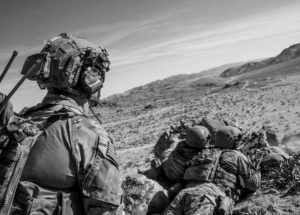 Over the next 29 days of Run Ranger Run, we will share information on veterans issues, what GallantFew does in response to these issues and how you can help. This first week of Run Ranger Run we will focus on the Issues facing today’s Veterans, and the number one issue is isolation. Veterans isolate for a number of reasons and this isolation causes anything from diminished self-confidence and low self-esteem all the way to suicide. A Veteran that has isolated is hidden from the community – a pocket of despair that goes on unseen, seemingly invisible to the community and cared about by no one. Isolation is simply a symptom of lost sense of purpose. A Veteran without purpose is a Veteran without hope.
Over the next 29 days of Run Ranger Run, we will share information on veterans issues, what GallantFew does in response to these issues and how you can help. This first week of Run Ranger Run we will focus on the Issues facing today’s Veterans, and the number one issue is isolation. Veterans isolate for a number of reasons and this isolation causes anything from diminished self-confidence and low self-esteem all the way to suicide. A Veteran that has isolated is hidden from the community – a pocket of despair that goes on unseen, seemingly invisible to the community and cared about by no one. Isolation is simply a symptom of lost sense of purpose. A Veteran without purpose is a Veteran without hope.
Day 2: Transition is not a Federal Responsibility
It’s the federal government’s responsibility to make warriors out of civilians, not civilians out of warriors. The current transition system is federally driven and is inadequate. It is a one-size fits all system, providing the same transitional content to soldiers ranging in rank from Private to Colonel. It is provided by a contractor who won with the lowest bid, and is renewable in multi-year increments based on performance. That performance is not based on job placements, or successful transition and in many cases the soldiers complete their “satisfaction” survey at the beginning of their Transition Assistance (TAP) or Army Careers and Alumni (ACAP) program. Transition is a “push” system, and there is no consideration given to where the transitioning person is going, and a soldier leaving Texas going to California is given the same training as a soldier leaving California for Texas. What company is going to support a job fair knowing that most of the people attending the job fair are not going to remain in the local area? The job fair becomes a feel-good paper drill that results in few, if any veterans obtaining jobs as a result. How much more effective would transition be if the content was delivered in the location the veteran chose to live? Then local companies would be excited about job fairs, and community organizations such as Chambers of Commerce, Rotary Clubs and even the faith-based community could participate in welcoming veterans home. Currently the community has no way to know which veterans are returning when, and numerous valuable resources go untapped. We’ll cover this more in week three of Run Ranger Run when we talk Community.
Day 3: The Individual Replacement System didn’t work in Vietnam
In the 70’s we drafted men, trained them as a group and then sent them to Vietnam as individual replacements. Many in-country “old salts” didn’t want to get to know the “FNG’s” because it was too painful to build a relationship with someone who would most likely be one of the next casualties, due to their inexperience. Isn’t it ironic that our current transition system works exactly the same way? We train a group of soldiers ostensibly to become civilians, then send them into the unknown as individual “replacements” to fly or die on their own. Some do just fine, as did many of those individual replacements in Vietnam – but how many become needless casualties, isolating and settling for jobs and careers below their potential simply because they didn’t have the support and connections needed to help them achieve success. The population most at risk is the mid-grade enlisted in the ranks E4 to E7. These veterans do not have military retirements, most don’t have college educations, and are lacking in school and professional networks, and many of them drop out of college even though the Post 9/11 GI Bill benefits are the best educational benefits in history. In the dearth of a federal program that facilitates these local connections and networks, we have to create them ourselves.
 Perhaps it’s the type of person attracted to the challenge, or the training, or a combination of the two but an elite warrior does not admit weakness, does not ask for help. He or she is told repeatedly “I don’t want to hear you snivel” and to “solve your own problems”. They are expected to be resourceful and resilient and to be anything else is to admit failure, and failure is not an option. Often injuries, including Traumatic Brain Injury (TBI) and Post Traumatic Stress (PTS) symptoms are not reported because while it’s hard to get into an elite unit, it’s harder to stay there. Many things can result in reassignment out of the unit, and as a result there is little to no record of such injuries in medical files. Knees, back, joint pain, anxiety, difficulty sleeping, memory issues go unreported. These veterans are the most in need of VA services but are the least likely to seek them, precisely because of this attitude – and when they do seek care it’s because they really need it, but it’s not documented because it wasn’t reported. It might be years before the condition is recognized and compensated, if the veteran fights through the process of appeals. If the Veteran seeks mental help, in all likelihood the “care provider” will be an intern or a newly educated therapist. None of them are veterans, and rarely does the veteran seeking care see the same therapist twice. Who wants to start at ground zero every time they talk to a therapist. The stigma of getting help is not only real, it’s validated by the system.
Perhaps it’s the type of person attracted to the challenge, or the training, or a combination of the two but an elite warrior does not admit weakness, does not ask for help. He or she is told repeatedly “I don’t want to hear you snivel” and to “solve your own problems”. They are expected to be resourceful and resilient and to be anything else is to admit failure, and failure is not an option. Often injuries, including Traumatic Brain Injury (TBI) and Post Traumatic Stress (PTS) symptoms are not reported because while it’s hard to get into an elite unit, it’s harder to stay there. Many things can result in reassignment out of the unit, and as a result there is little to no record of such injuries in medical files. Knees, back, joint pain, anxiety, difficulty sleeping, memory issues go unreported. These veterans are the most in need of VA services but are the least likely to seek them, precisely because of this attitude – and when they do seek care it’s because they really need it, but it’s not documented because it wasn’t reported. It might be years before the condition is recognized and compensated, if the veteran fights through the process of appeals. If the Veteran seeks mental help, in all likelihood the “care provider” will be an intern or a newly educated therapist. None of them are veterans, and rarely does the veteran seeking care see the same therapist twice. Who wants to start at ground zero every time they talk to a therapist. The stigma of getting help is not only real, it’s validated by the system.
Everything one does in the military – training, combat operations, is pulled apart in an After Action Review (AAR). The AAR is central to the learning process in the military and aims at drawing light to not only the things needing improvement, but also the things done well. Until now there has been no “Transition AAR”. We seek to create this two ways. First, by collecting and sharing our collective transition experiences, some of which you will see in these daily Run Ranger Run posts. Second, by the simple relationship of a local veteran, previously transitioned mentoring (we call it being a Guide) a veteran undergoing transition in the local area. The transitional AAR of an Army veteran in Dallas might not be helpful to a Marine Corps veteran in Los Angeles – but the AAR of a Marine Corps veteran firmly transitioned can be priceless (and life-changing) to a Marine just returning to LA. One of the biggest universal lessons is that the sense of loss, reduced self-confidence, struggle with sense of purpose and tendency to self-medicate with alcohol is nearly universal to many enlisted transitioning veterans and we’ve had combat hardened special operations soldiers tell us that simple knowledge that what they were experiencing was normal helped them to cope with it – before they thought something was wrong with them and it made their transition struggle more acute. Armed with that knowledge, now they know the enemy and can work to defeat that enemy, and we can provide them resources to increase the likelihood of success.
Transition is like night land navigation, old-school. You stumble through the woods in pitch black, following an azimuth that someone gave you – a glowing dot on the north seeking arrow that you must keep aligned with two glowing dots on the compass body. Provided you keep those dots aligned, keep a proper pace count and negotiate obstacles on alternating sides you’ll keep an accurate azimuth. Stray a few degrees for a hundred meters, you’re still close. Stray a few degrees for ten kilometers and good luck finding your objective. When a veteran sets out on their transition, the initial azimuth is provided by the ACAP or TAP program. It might or might not be accurate for the location, career and specific needs of the veteran but it’s a start. If that veteran strays off azimuth a few degrees (alcohol, isolation, problems networking) but we can connect him or her with a local veteran Guide in the first few months of transition, that’s the hundred meter mark. It’s relatively simple to get back on azimuth. Stray off that azimuth for ten years and we see the problems manifested in financial devastation, failed careers, alcoholism, ruined relationships, divorce, and on and on. Not everyone strays off azimuth, and those that don’t can help the others get back and stay on azimuth. #azimuthcheck
Day 7: The first week of Run Ranger Run comes to a close!
Remember this week’s focus on the issues facing Veterans. Isolation is the root of all the problems. Left unchecked = under/unemployment, self-medicating, alcohol abuse, destroyed self-confidence, loss of self-esteem, financial devastation, ruined relationships, loss of home, suicide. Transition is not a federal responsibility, and the individual replacement system works no better in transition than it did in Southeast Asia forty years ago. GallantFew is building the capacity and capability to have solid transition After Action Reviews and the simple analogy of transition as night land navigation makes it easy to understand the dangers in being off azimuth.
 Day 2: Response-Ability. Everyone has the ability to choose their response to any situation, and it takes training and practice to do so. The late Dr. Stephen Covey told a story about sitting in a diner, enjoying coffee and his paper. A young boy was running around the diner, interrupting people and being a brat while the father sat in a booth staring into space. Finally exasperated, Covey caught the man’s attention and said “Sir, can’t you see your child is bothering people?” to which the father apologized and replied “we just came from the hospital where I learned my wife, his mother is dying and I don’t know what I’m going to do”. Did your perception of the situation change? Most people go from wanting to discipline the child to asking what they can do to help. Nothing about the situation changed, the kid is still being a brat, dad is still sitting there, except somewhere in your mind a switch flipped and created a different response. GallantFew helps veterans identify how to flip this switch and learn to make it part of everyday life.
Day 2: Response-Ability. Everyone has the ability to choose their response to any situation, and it takes training and practice to do so. The late Dr. Stephen Covey told a story about sitting in a diner, enjoying coffee and his paper. A young boy was running around the diner, interrupting people and being a brat while the father sat in a booth staring into space. Finally exasperated, Covey caught the man’s attention and said “Sir, can’t you see your child is bothering people?” to which the father apologized and replied “we just came from the hospital where I learned my wife, his mother is dying and I don’t know what I’m going to do”. Did your perception of the situation change? Most people go from wanting to discipline the child to asking what they can do to help. Nothing about the situation changed, the kid is still being a brat, dad is still sitting there, except somewhere in your mind a switch flipped and created a different response. GallantFew helps veterans identify how to flip this switch and learn to make it part of everyday life.
Day 3: The first point of the GallantFew STAR: Emotional Wellness – Subject Matter Experts: US Army Ranger veteran Karl Monger and Dr. Carrie Elk.
In 2015 Karl became a Certified Burris Wellness Coach. This system (www.burrisinstitute.com) coaches people to tap the power of the subconscious to drive personal growth and excellence and is available through GallantFew at no cost to Veterans. Dr. Carrie Elk is a licensed therapist in Tampa Florida and expert in PTS, TBI and addiction issues. GallantFew volunteers have dealt with PTS, TBI, substance abuse and more and their experiences help guide Veterans through the process of learning to change behavior or through seeking treatment. GallantFew is a USSOCOM Care Coalition member and through this and other networks will find a way to get effective treatment for a Veteran in need.
Day 4: The second point of the GallantFew STAR: Physical Wellness
Subject Matter Expert: US Army Ranger veteran Clarence Matthews. Clarence is a certified Personal Trainer and expert in fitness and nutrition. Overcoming physical pain requires discipline, drive, and coaching and maintaining a strong core helps lessen some of the effects caused by the wear and tear of military service. While on active duty, Physical Training (PT) was a daily ritual and often falls by the wayside upon transition…
Read a complete blog post on physical wellness.
Day 5: Do you believe your social network is important to your overall wellness? GallantFew, Inc. and Team Red, White & Blue believe it is vitally important to balance wellness.
The third point of the GallantFew STAR: Social Wellness
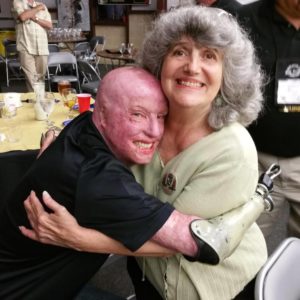 A strong local social network is critical to feeling part of the community and connected to others. Too often Veterans retreat behind online social media platforms and limit interpersonal exchanges to members of their families or other close friends or in a place where the focus is on alcohol consumption. There are hundreds of opportunities in most communities to get connected and socialize (and that helps develop one’s professional network). Rotary clubs, Kiwanis, Chambers of Commerce are all great ways to meet new people, have fun and find new opportunities. Remember that isolation is the number one factor in Veteran issues and although meeting new people can be off-putting or intimidating to some, the structured format of a Chamber of Commerce social or Rotary club breakfast makes it a safe way to meet new people and make new friends. Connecting with a GallantFew Guide is critical in helping a veteran make that transition and get connected to that local social network. Guide or not, make it a goal to meet one new person every week!
A strong local social network is critical to feeling part of the community and connected to others. Too often Veterans retreat behind online social media platforms and limit interpersonal exchanges to members of their families or other close friends or in a place where the focus is on alcohol consumption. There are hundreds of opportunities in most communities to get connected and socialize (and that helps develop one’s professional network). Rotary clubs, Kiwanis, Chambers of Commerce are all great ways to meet new people, have fun and find new opportunities. Remember that isolation is the number one factor in Veteran issues and although meeting new people can be off-putting or intimidating to some, the structured format of a Chamber of Commerce social or Rotary club breakfast makes it a safe way to meet new people and make new friends. Connecting with a GallantFew Guide is critical in helping a veteran make that transition and get connected to that local social network. Guide or not, make it a goal to meet one new person every week!
The fourth point of the GallantFew STAR: Professional Wellness
A Veteran transitioning to a new community has no professional network. After four or six years in the military, high school friends are either just completing college or working hourly jobs. Neither are a great basis for a professional network. Connecting that Veteran with a GallantFew Guide – a carbon-copy of military service, only transitioned ten or twenty years earlier – gives that new Veteran access to a professional network immediately. Layer on top of that similar civilian occupation interests and the relationships becomes even more effective. Example: A Marine leaves the Corps and moves to New York to go to school and get an accounting degree. A perfect Guide is a Marine Corps Veteran who lives nearby in New York and is a CPA or partner in a financial firm. Now you have instant credibility, trust, familiarity and perhaps even shared connections, for the Guide may have served with a Corporal who the new Veteran knows as a Sergeant Major. This opens the door for internships, summer jobs or even permanent career opportunities. The thread of shared service is a powerful one, and allows the Guide to challenge the new Veteran in ways that a non-Marine can’t. The relationship between two 101st Airborne Veterans – one who served in Vietnam and one who served in Afghanistan is instantly powerful and tremendously beneficial to the new Veteran. We call new Veterans “Future Guides”, because once they have transition experience they can in turn be a Guide for another Future Guide. Boone Cutler calls it “going from the known to the known, rather than going from the known to the unknown”. An important component of Professional Wellness is financial management. Going from an environment where food, clothing, housing and healthcare are provided to one where everything costs money is an abrupt change and without financial planning a Future Guide can fall into financial difficulties. GallantFew has volunteers that help coach Veterans through personal financial management.
How important is community? Week Three Theme: Community
 Day 1: The Golden Ratio, 9 to 1 – US Census data tells us about 10% of the US population are veterans. Of those ten veterans, nine are pre-9/11 (all the way back to WWII) and one is post 9/11. This means in every community in the country there are potentially nine veterans that could be a resource to the one post 9/11 veteran going through transition. Sure some of these nine are going to be old, retired, perhaps even in nursing homes – but not all post 9/11 veterans have difficulty transitioning, either. Imagine a community like Dallas, Texas which boasts a population of 1.2 million. That means there are 120,000 veterans, with 12,000 post 9/11. Or Keller, Texas with a population of 40,000. 4000 are veterans, 400 are post-9/11. Let’s apply this ratio to veteran employment. All through 2015, employment rates dropped nationwide for all population categories – but post 9/11 veterans in January 2016 were ten percent more likely to be unemployed than someone who never served, and SEVENTY percent less likely to have a job that a pre-9/11 veteran. Those of us who left active duty before 2001 have established ourselves in the community. We belong to Rotary Clubs, Chambers of Commerce, and boast social circles that include community leaders. Our networks are ideally suited to help that new young veteran get connected and perhaps get hired. This “Golden Ratio” of 9 to 1 exists in virtually every community in our nation. Our challenge is to identify the nine, educate them and provide a mechanism to connect them with the one needing transition assistance. This lies at the core of GallantFew’s ultimate goal, to connect every veteran leaving active duty with a veteran just like him or her, in their local town. This prevents isolation, encourages community growth and veteran purpose. With purpose comes hope.
Day 1: The Golden Ratio, 9 to 1 – US Census data tells us about 10% of the US population are veterans. Of those ten veterans, nine are pre-9/11 (all the way back to WWII) and one is post 9/11. This means in every community in the country there are potentially nine veterans that could be a resource to the one post 9/11 veteran going through transition. Sure some of these nine are going to be old, retired, perhaps even in nursing homes – but not all post 9/11 veterans have difficulty transitioning, either. Imagine a community like Dallas, Texas which boasts a population of 1.2 million. That means there are 120,000 veterans, with 12,000 post 9/11. Or Keller, Texas with a population of 40,000. 4000 are veterans, 400 are post-9/11. Let’s apply this ratio to veteran employment. All through 2015, employment rates dropped nationwide for all population categories – but post 9/11 veterans in January 2016 were ten percent more likely to be unemployed than someone who never served, and SEVENTY percent less likely to have a job that a pre-9/11 veteran. Those of us who left active duty before 2001 have established ourselves in the community. We belong to Rotary Clubs, Chambers of Commerce, and boast social circles that include community leaders. Our networks are ideally suited to help that new young veteran get connected and perhaps get hired. This “Golden Ratio” of 9 to 1 exists in virtually every community in our nation. Our challenge is to identify the nine, educate them and provide a mechanism to connect them with the one needing transition assistance. This lies at the core of GallantFew’s ultimate goal, to connect every veteran leaving active duty with a veteran just like him or her, in their local town. This prevents isolation, encourages community growth and veteran purpose. With purpose comes hope.
Last week we talked about how transition is not the government’s problem to solve. Here we touch on how it is a local issue. Local meaning you and me and how we can be powerful influencers in change. We can be the change!!!
 Day 2: Transition is a local issue. The federal government has assumed responsibility for providing transition training via ACAP or TAP programs and offering connections to job fairs. These programs are offered at the point of departure from military service, but most people don’t stay where they last served. Most go home – back to school, follow a job opportunity, or live someplace they’ve always wanted to go. The stock information identical from Private to Colonel provide a departure azimuth which the transitioning veteran quickly realizes is nowhere near the course he or she needs to follow for success in their new community. Off azimuth and struggling to fit in, there is a strong possibility of a failed or less than stellar transition. Where do you suppose those problems manifest themselves? They manifest in the local community. If you don’t have a job, you can’t pay your rent, or your car payment. You don’t pay taxes. If you self-medicate you might get a DUI, or God forbid kill someone in a car wreck. Property values decline, families undergo divorce, single parent kids are traumatized. If the veteran has PTS or a TBI that is undocumented or untreated, generations in the future might suffer as a result. GallantFew’s Executive Director’s grandfather was a three-war soldier, first earning his CIB in the pacific in World War II. Also fighting in Korea and Vietnam, he died alone, an alcoholic in a men’s shelter ostracized from his family. His son (our Executive Director’s biological father) left his pregnant wife and two kids. Those three kids have six divorces between two of them. The downstream ramifications of failed transition and undiagnosed and non-treated associated issues can have catastrophic effect on dozens, if not hundreds in the future. Where do we start? We’ll touch on that tomorrow.
Day 2: Transition is a local issue. The federal government has assumed responsibility for providing transition training via ACAP or TAP programs and offering connections to job fairs. These programs are offered at the point of departure from military service, but most people don’t stay where they last served. Most go home – back to school, follow a job opportunity, or live someplace they’ve always wanted to go. The stock information identical from Private to Colonel provide a departure azimuth which the transitioning veteran quickly realizes is nowhere near the course he or she needs to follow for success in their new community. Off azimuth and struggling to fit in, there is a strong possibility of a failed or less than stellar transition. Where do you suppose those problems manifest themselves? They manifest in the local community. If you don’t have a job, you can’t pay your rent, or your car payment. You don’t pay taxes. If you self-medicate you might get a DUI, or God forbid kill someone in a car wreck. Property values decline, families undergo divorce, single parent kids are traumatized. If the veteran has PTS or a TBI that is undocumented or untreated, generations in the future might suffer as a result. GallantFew’s Executive Director’s grandfather was a three-war soldier, first earning his CIB in the pacific in World War II. Also fighting in Korea and Vietnam, he died alone, an alcoholic in a men’s shelter ostracized from his family. His son (our Executive Director’s biological father) left his pregnant wife and two kids. Those three kids have six divorces between two of them. The downstream ramifications of failed transition and undiagnosed and non-treated associated issues can have catastrophic effect on dozens, if not hundreds in the future. Where do we start? We’ll touch on that tomorrow.
Day 3: Community steps to success. A local community of connected Veterans creates the best environment for successful transition. Many communities have started a 1st Saturday Veteran Breakfast where Veterans can enjoy a cup of coffee and meet other Veterans in a no-pressure, inexpensive relaxing environment (https://www.facebook.com/FirstSaturdayBreakfast/?fref=ts). Does your community have a Veterans section on the town website? Here’s an example: http://www.trophyclub.org/tc-exchange/2016/01/20/veterans/. Imagine if once a quarter the Chamber of Commerce, local governments and businesses held a “Welcome Home Veterans” barbeque or ice cream social. Veterans seeking employment could wear a red nametag, businesses wanting to hire veterans could wear blue nametags. Red nametags, go meet the blues! To kickstart activity such as this, someone – a Veteran – needs to say “Here I am, I’ll do it!”. Initially when the Trophy Club Texas 1st Saturday breakfast started it was often only one or two attending – but over the last six months it’s grown and over a dozen came in February. It’s important to remember that every community is different and what works well in one might not be a great fit in another. GallantFew can help you work within your community to get started. Visit www.gallantfew.organd sign up, make sure you tell us you want to volunteer in your community!
Day 4: Veteran silos are powerful connecting pathways. The broadest silo is branch of service – i.e. Army, Navy, etc. Each branch can be further siloed by unit or by special qualification, such as the 82nd Airborne or SATCOM operator. When connecting Veterans, GallantFew looks at these “silos of service” which have to date resulted in three silo programs: The Raider Project (MARSOC and combat Marine infantry); The Darby Project (Rangers tabbed and/or scrolled); and Wings Level (USAF). GallantFew covers any Veterans not fitting these categories to ensure no one is omitted. Imagine an Afghanistan campaign Veteran who deployed with the 101st Airborne and is now leaving the Army and moving to Denver. GallantFew would look for a 101st Airborne veteran in Denver who has successfully transitioned and is willing to be a Guide. Connecting Veterans outside their silos can still work but the relationship takes longer to develop and to build trust. Marines connect with and trust other Marines quicker than they would connect with and trust an Army Veteran, and the reverse is also true.
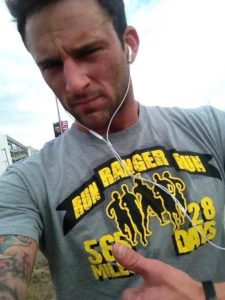 Day 5: The Power of One. What does it take to a community moving? It takes one motivated person who won’t take no for an answer. One person starting a 1st Saturday Breakfast. One person organizing a motorcycle benefit ride. One person speaking to the local town council, challenging them to take on Veteran transition. Can you be that one? Will you be that one? One of the favorite Scriptureverses for Special Operations Veterans is Isaiah 6-8: “Then I heard the voice of the Lord saying, ‘Whom shall I send? And who will go for us?’ and I said ‘Here am I. Send me'”. One person – like Cory. Want an example of the power of one? Cory Smith!! Run Ranger Run started with one person on a 565 mile journey to bring awareness to transition struggles. This year we had 1270 people sign up to “run” with Cory and commit to those symbolic 565 miles
Day 5: The Power of One. What does it take to a community moving? It takes one motivated person who won’t take no for an answer. One person starting a 1st Saturday Breakfast. One person organizing a motorcycle benefit ride. One person speaking to the local town council, challenging them to take on Veteran transition. Can you be that one? Will you be that one? One of the favorite Scriptureverses for Special Operations Veterans is Isaiah 6-8: “Then I heard the voice of the Lord saying, ‘Whom shall I send? And who will go for us?’ and I said ‘Here am I. Send me'”. One person – like Cory. Want an example of the power of one? Cory Smith!! Run Ranger Run started with one person on a 565 mile journey to bring awareness to transition struggles. This year we had 1270 people sign up to “run” with Cory and commit to those symbolic 565 miles
Day 6: Today GallantFew’s Executive Director attended the funeral for Ranger veteran Gary Wayne Dunklin, a life ended tragically and too soon. In lieu of a Run Ranger Run message today, please honor his service and read his life story. This gofundme page is set up to help the family, we gave a cash gift today. https://www.gofundme.com/mcpwfhzs
Run message today, please honor his service and read his life story. This gofundme page is set up to help the family, we gave a cash gift today. https://www.gofundme.com/mcpwfhzs
The last day of week three! We love the pictures and stories – keep them coming! Today’s message: Want an easy way to support GallantFew? Use the Amazon.com Smile program. If you buy things on Amazon.com, first go to www.smile.amazon.com and select GallantFew, Inc. from the public charities. Every time you shop, start at smile.amazon.com and a percent of your purchase amount will be donated to GallantFew!
Final Week of Run Ranger Run 2016. Let’s pull all the messages together.
 Day 1: Cookie-cutter federal transition programs, failure to share transition lessons learned, personalities that won’t admit “weakness” or ask for help, straying off azimuth and drinking excessively all lead to isolation. A Veteran who has isolated is on a one-way path to unemployment, financial problems, relationship problems, homelessness and in the extreme leads to suicide.
Day 1: Cookie-cutter federal transition programs, failure to share transition lessons learned, personalities that won’t admit “weakness” or ask for help, straying off azimuth and drinking excessively all lead to isolation. A Veteran who has isolated is on a one-way path to unemployment, financial problems, relationship problems, homelessness and in the extreme leads to suicide.
Day 2: Who’s Got Your Back?  The power of a Guide to help a transitioning Veteran cannot be overstated. To be connected with someone you trust on a basis of shared service history (even if you didn’t serve together) opens doors of opportunity – in school, in employment, in social and in community venues. The Guide has his or her own transition after action review (AAR) that is very valuable information, and the Guide can challenge and hold accountable that new Veteran in ways a non-veteran cannot.
The power of a Guide to help a transitioning Veteran cannot be overstated. To be connected with someone you trust on a basis of shared service history (even if you didn’t serve together) opens doors of opportunity – in school, in employment, in social and in community venues. The Guide has his or her own transition after action review (AAR) that is very valuable information, and the Guide can challenge and hold accountable that new Veteran in ways a non-veteran cannot.
Day 3: You are the key. You are the ones who help change lives. In a community of 100, ten are Veterans. Nine are pre-9/11 and one is post 9/11. This ratio holds true no matter the size of the community. We must identify these Veterans, inform them, motivate them and mobilize them. Pre-9/11 Veterans are more than willing to be Guides to new Veterans, but until now there has not been a mechanism to make that happen. GallantFew makes that happen, and we need your help to reach more and more communities.
Day 4: “My mission is to find a mission to help my warfighter family”. The VA says 22 Veterans take their own lives every day. That’s over 8000 and year and in 15 years of war the total exceeds 120,000! There should be a media outcry and deafening cry to stop this. The truth is, we cannot stop 22 Veteran suicides a day – but we CAN stop the next one, and the next. We believe in the Spartan Pledge as one way to stop the next suicide. www.descendantsofsparta.com
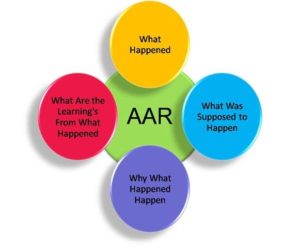
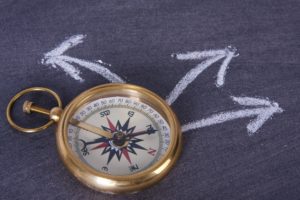
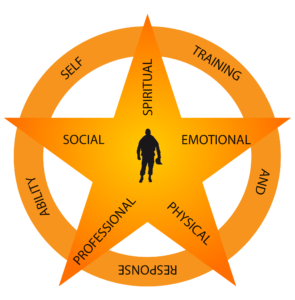
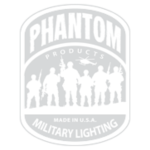







Leave a Reply